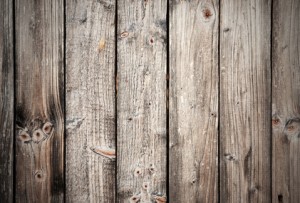There’s a lot to be said about the rich, earthy look of wood. All too often it’s overlooked, however. We use wood to build walls, and even to trim them. But then we cover it with drywall, wallpaper or paint. Gone is the warmth that wood imparts, and wood paneling or other wall sheathing alternatives are expensive, and often lacking in character.
That is, except for wood pallets. You can affordably create an accent wall (or cover as many walls as you want) with pallet wood and bring the beauty back into your home without spending much at all.
Why Use Pallet Wood
 It’s not just that pallets are inexpensive that makes them attractive. And actually, you can usually find them for free. Most retailers use hundreds of pallets a day; ask at home improvement stores or garden centers in particular. Explain your project and you’ll probably soon have more pallets than you need. (That’s a good thing! You’re likely going to want to create more items once you finish your accent wall.)
It’s not just that pallets are inexpensive that makes them attractive. And actually, you can usually find them for free. Most retailers use hundreds of pallets a day; ask at home improvement stores or garden centers in particular. Explain your project and you’ll probably soon have more pallets than you need. (That’s a good thing! You’re likely going to want to create more items once you finish your accent wall.)
Pallet wood used in the home is also attractive to the eye. The wear and tear the wood experienced, along with the natural aging caused by exposure, lends the wood a distressed patina that adds to the homey look when your wall is finished.
Another benefit to using pallet wood is the environmental aspect. With millions of trees consumed for building and decorating our homes, using recycled pallet wood is another way to help conserve resources.
Selecting and Disassembling Pallets
When selecting pallets, try to choose the cleanest, those in the best shape, and ones that haven’t been exposed to chemicals or pesticides. No matter how nice the pallet, however, you’ll probably need to clean it – either before or after disassembling it.
Some people like to wash the wood with soapy water and allow it to dry before proceeding. Others simply brush the wood with a soft-bristled brush (like a broom) to remove surface dirt. Don’t worry about boards with stains and markings. Those you can’t live with, simply don’t use.
To disassemble the pallets, try using a pry bar and hammer to loosen and pull nails as well as to break the boards free. Alternatively, use a saw and blade capable of dealing with metal to slice through the nails and free the boards. Sort boards as you work, throwing away those you don’t wish to use and separating any of a different thickness than the boards running along the top and bottom of the pallet. Remove any remaining nails from boards you wish to keep.
Preparing the Pallet Wood
How you prepare your wood is a matter of preference. Some people like to keep the pallet boards rough and unfinished. Others prefer a little more finishing to the wood.
- Consider sanding the pieces. Use a rough-grit paper for a more rustic look, and use an orbital or belt sander to make the job easier. Smooth rough edges and other imperfections.
- Apply a finish to the wood before or after installing, if desired. Consider using stain to blend the pieces together or use a clear coat to protect the wood. Allow the pieces to dry thoroughly before hanging on the wall.
Preparing the Wall
Start by finding, and marking, the location of every stud in the wall. Typically studs run every 16 inches, so once you locate one, you should find the next much easier. Run a straightedge or stretch a chalk line between marks at the top and bottom of the wall, and mark the entire length to give you a visual guide for nailing the wood in place.
Some people prefer to hang plywood on the wall and then attach the pallet wood to the plywood. While this prevents hundreds of holes in the wall, it does add weight and take up space. Your wall will be thicker. You won’t have to worry about where to nail, however.
Another alternative is to paint the wall a dark, neutral color then mark the stud locations. This prevents an obvious color from peeking out between boards and spoiling the effect. Allow the paint to dry thoroughly before marking the studs and proceeding.
Hanging the Pallet Wood
With all the preparation out of the way, it’s time to get down to hanging the wood. Start at the top of the wall and – working from left to right, then from right to left again – place the boards against the wall and nail into the studs. Use small nails to avoid splitting the wood. Working in opposite directions allows you to stagger the ends so that the joints do not align.
Continue down the wall, cutting off boards as necessary to fit the wall at the ends. Use outlet extenders to bring electrical boxes flush with the new wall surface. Rip the final row in half, as needed, to accommodate the space at the bottom of the wall.
Here’s a neat idea: “Frame” the pallet-wood wall to create a different effect. Leave a consistent gap at the wall ends and run pieces of pallet wood vertically, like trim. This works especially well for walls that stand alone, without an adjacent wall to cover the wood ends.
